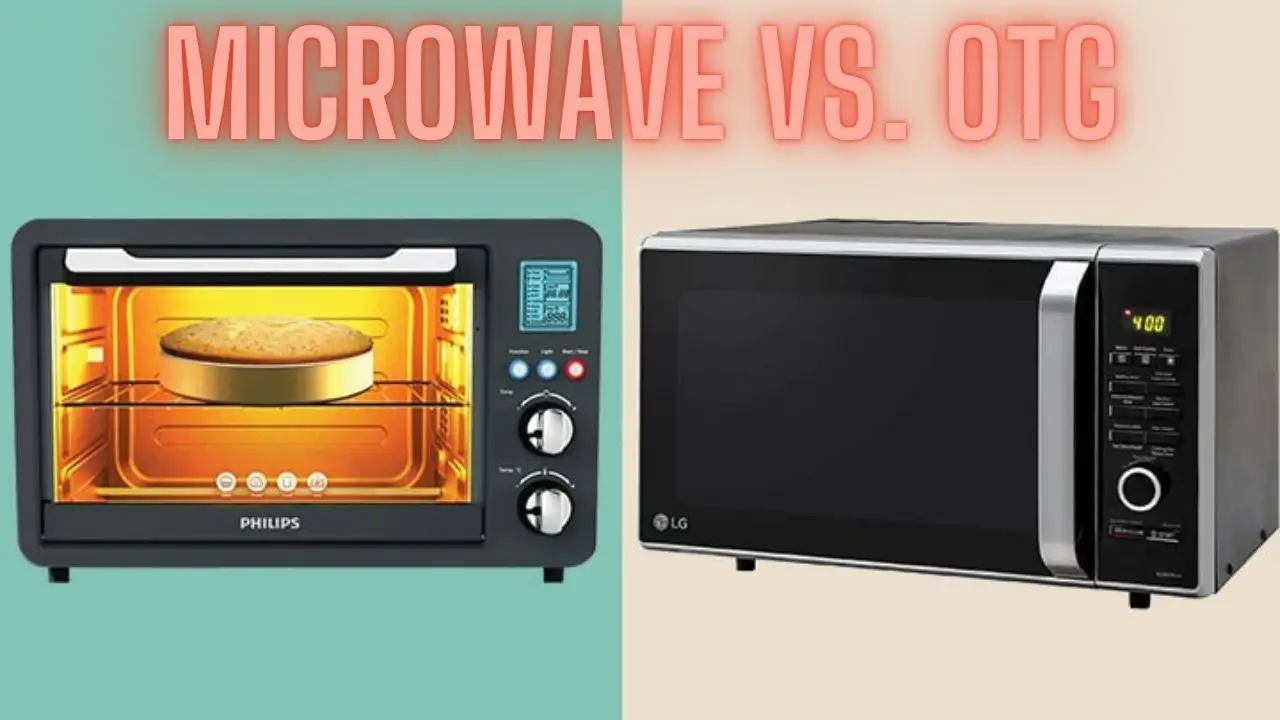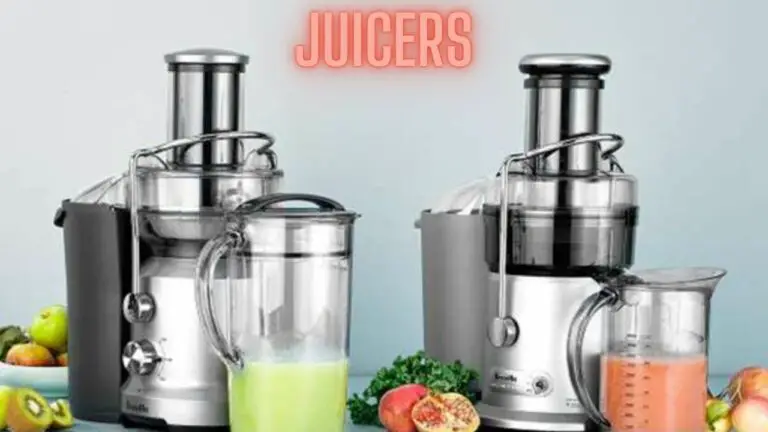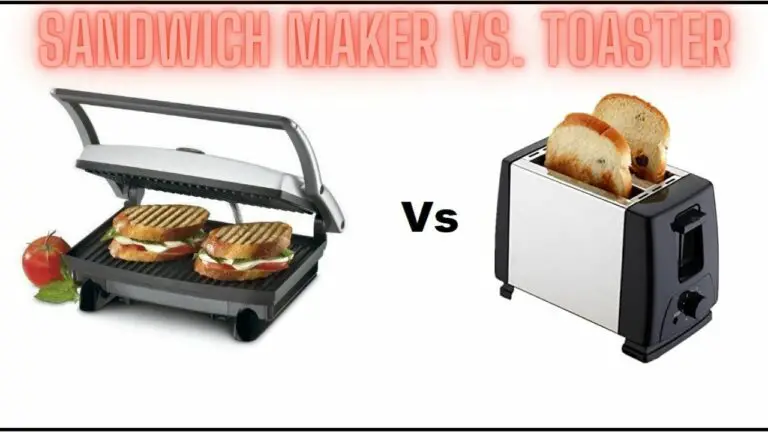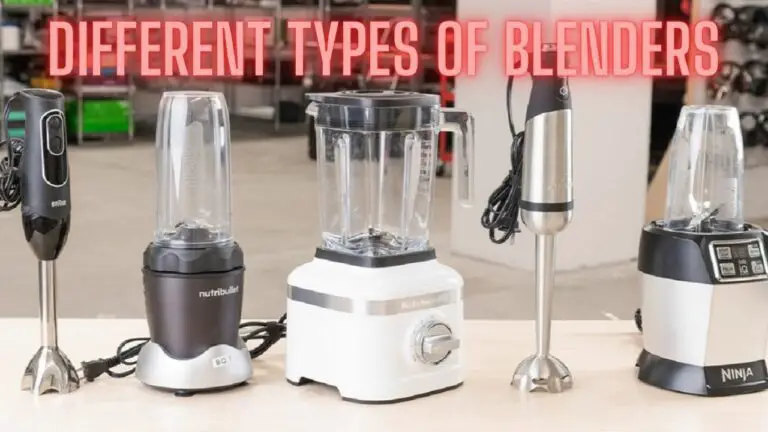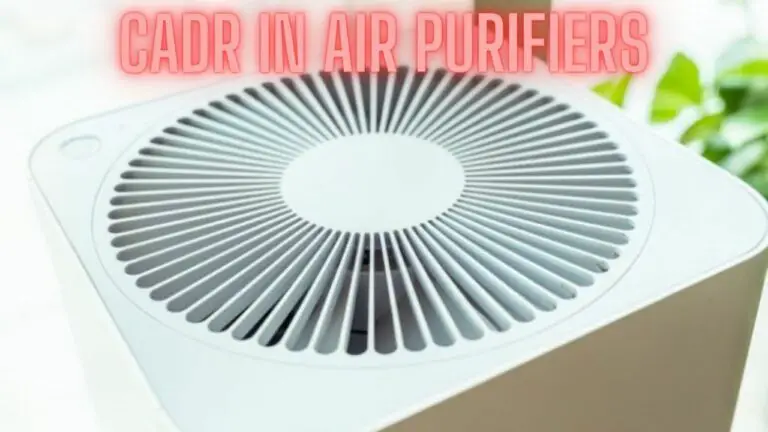Microwave vs. OTG (Oven Toaster Griller): Which Appliance is Right for You?
Introduction
Microwave ovens and Oven-Toaster-Grills (OTGs) are two popular kitchen appliances used for cooking and baking. While both appliances serve similar purposes, they have distinct features and functionalities that cater to different cooking preferences and needs. In this comparison, we will explore the differences between microwave ovens and OTGs, their respective strengths and weaknesses, and considerations for choosing the right appliance for your kitchen. Whether you’re a casual cook, a baking enthusiast, or someone looking to streamline meal preparation, understanding the characteristics of microwave ovens and OTGs will help you make an informed decision based on your culinary requirements and preferences.
Microwave Oven
A microwave oven is a kitchen appliance that uses microwave radiation to heat and cook food quickly and efficiently. It is known for its convenience, speed, and versatility in reheating, defrosting, and cooking a wide range of dishes. Here are some key features and characteristics of microwave ovens:
- Microwave Technology: Microwave ovens work by emitting electromagnetic waves, known as microwaves, which penetrate food and cause water molecules within the food to vibrate, generating heat. This rapid heating process allows food to cook evenly and quickly, often in a fraction of the time compared to conventional cooking methods.
- Speed and Efficiency: One of the main advantages of microwave ovens is their speed and efficiency in cooking. They can rapidly heat and cook food, making them ideal for busy individuals or those with limited time for meal preparation. Microwave ovens are particularly effective for reheating leftovers, defrosting frozen foods, and cooking convenience foods such as microwave dinners or popcorn.
- Cooking Modes: Most modern microwave ovens come with various cooking modes and presets, allowing users to cook a variety of dishes with ease. These may include settings for defrosting, popcorn, beverages, reheating, and specific food items such as vegetables, pizza, or potatoes. Some advanced models may also feature sensor cooking technology, which automatically adjusts cooking time and power level based on the food’s moisture content and temperature.
- Compact Design: Microwave ovens are available in a range of sizes, from compact countertop models to larger built-in or over-the-range units. Their compact design makes them suitable for kitchens of all sizes, including apartments, dorm rooms, and RVs, where space may be limited.
- Limited Baking Capabilities: While microwave ovens excel at heating and cooking certain types of food quickly, they have limitations when it comes to baking and browning. Microwave cooking primarily heats food from the inside out, resulting in moist and tender dishes but without the crispiness or browning achieved through conventional baking or grilling methods.
- Safety Features: Modern microwave ovens are equipped with safety features such as child lock mechanisms, door sensors, and automatic shut-off functions to prevent accidents and ensure user safety during operation.
Overall, microwave ovens offer a convenient and efficient solution for everyday cooking tasks, including reheating, defrosting, and quick meal preparation. However, they may not be suitable for certain cooking techniques that require precise temperature control or browning effects, such as baking bread or roasting meats.
Oven-Toaster-Grill (OTG)
An Oven-Toaster-Grill (OTG) is a versatile kitchen appliance designed for baking, toasting, grilling, and roasting food items. It offers a range of cooking options and is popular among home cooks and baking enthusiasts for its ability to achieve precise temperature control and create a variety of delicious dishes. Here are some key features and characteristics of OTGs:
- Three-in-One Functionality: As the name suggests, an OTG combines the functions of an oven, toaster, and grill in a single appliance. It allows users to bake cakes, cookies, bread, and other baked goods, toast bread slices or bagels, and grill or roast meats, vegetables, and kebabs.
- Convection Heating: Many OTG models feature convection heating technology, which uses a fan to circulate hot air evenly throughout the oven cavity. This helps maintain consistent temperatures and ensures uniform cooking and browning of food items, resulting in crispy and evenly baked dishes.
- Precise Temperature Control: OTGs typically come with adjustable temperature controls that allow users to set the desired cooking temperature according to the recipe requirements. This precise temperature control is essential for achieving optimal baking results, such as golden-brown crusts on bread or perfectly cooked meats.
- Multiple Cooking Modes: OTGs may offer multiple cooking modes and settings to accommodate a variety of cooking techniques and recipes. These may include bake, broil, toast, grill, and rotisserie functions, giving users flexibility in preparing different types of dishes and experimenting with various cooking methods.
- Spacious Interior: OTGs usually have a spacious interior cavity that can accommodate large baking trays, roasting pans, or multiple racks simultaneously. This allows users to cook large batches of food or multiple dishes at once, making it suitable for entertaining or preparing meals for the whole family.
- Dedicated Grilling Function: Many OTG models come with a dedicated grilling function, allowing users to grill meats, vegetables, and seafood to perfection. The grill rack or tray may be positioned close to the heating element to ensure even grilling and browning of food items.
- Versatility and Creativity: OTGs offer versatility and flexibility in cooking, allowing users to experiment with different recipes and cooking techniques. Whether you’re baking a cake, toasting bread, or grilling kabobs, an OTG provides the tools and settings needed to unleash your culinary creativity.
- Ease of Cleaning: OTGs are designed for easy cleaning, with removable racks, trays, and crumb trays that can be washed separately or placed in the dishwasher for convenience.
Overall, an OTG is a valuable addition to any kitchen, offering a wide range of cooking options and precise temperature control for baking, toasting, and grilling a variety of delicious dishes. Its versatility, performance, and ease of use make it a favorite among home cooks and baking enthusiasts looking to elevate their culinary creations.
Comparison between Microwave and OTG
When choosing between a microwave oven and an Oven-Toaster-Grill (OTG), it’s essential to consider their respective features, functionalities, and cooking capabilities. Here’s a comparison between microwave ovens and OTGs to help you make an informed decision:
- Cooking Methods:
- Microwave Oven:
- Utilizes microwave radiation to heat and cook food quickly and efficiently.
- Ideal for reheating leftovers, defrosting frozen foods, and cooking convenience foods.
- Not suitable for baking or achieving crispy textures.
- OTG:
- Uses convection heating and precise temperature control to bake, toast, grill, and roast food items.
- Suitable for baking cakes, cookies, bread, and other baked goods, as well as grilling meats and vegetables.
- Offers versatility in cooking techniques and can achieve crispy textures and golden-brown crusts.
- Microwave Oven:
- Speed and Efficiency:
- Microwave Oven:
- Offers rapid heating and cooking times, making it convenient for quick meal preparation.
- Ideal for busy individuals or those with limited time for cooking.
- OTG:
- Cooking times may be longer compared to microwave ovens, especially for baking and roasting.
- Requires preheating and may take longer to achieve desired results, but offers precise temperature control and even cooking.
- Microwave Oven:
- Versatility:
- Microwave Oven:
- Primarily designed for heating and cooking convenience foods, with limited baking capabilities.
- Offers preset cooking modes for defrosting, reheating, and cooking specific food items.
- OTG:
- Offers versatility in cooking techniques, including baking, toasting, grilling, and roasting.
- Can accommodate a wide range of recipes and cooking styles, allowing for greater culinary creativity and experimentation.
- Microwave Oven:
- Texture and Taste:
- Microwave Oven:
- Heating primarily occurs from the inside out, resulting in moist and tender dishes but without crispy textures or browning effects.
- OTG:
- Convection heating and precise temperature control allow for even cooking and browning, resulting in crispy textures and golden-brown crusts.
- Ideal for achieving bakery-quality results in baked goods and roasted dishes.
- Microwave Oven:
- Space and Size:
- Microwave Oven:
- Available in compact countertop models as well as larger built-in or over-the-range units to suit various kitchen sizes and layouts.
- OTG:
- Typically larger in size and requires countertop space or dedicated installation space in the kitchen.
- Microwave Oven:
- Ease of Use and Maintenance:
- Microwave Oven:
- Simple to use with preset cooking modes and one-touch controls.
- Easy to clean with removable turntable and interior surfaces.
- OTG:
- Requires preheating and manual temperature adjustment for baking and roasting.
- Removable racks, trays, and crumb trays make cleaning straightforward.
- Microwave Oven:
Ultimately, the choice between a microwave oven and an OTG depends on your cooking preferences, culinary needs, and available kitchen space. If you prioritize speed and convenience for quick meal preparation, a microwave oven may be suitable. However, if you enjoy baking, toasting, and grilling a variety of dishes with precise temperature control and crispy textures, an OTG would be a better option.
Cooking Applications
Both microwave ovens and Oven-Toaster-Grills (OTGs) have their unique cooking applications and are suitable for preparing different types of dishes. Here’s a breakdown of the cooking applications for each appliance:
Microwave Oven:
- Reheating: Quickly heat up leftovers, soups, stews, and other cooked dishes.
- Defrosting: Thaw frozen meats, vegetables, and other foods in minutes.
- Cooking Convenience Foods: Prepare microwave dinners, instant noodles, popcorn, and other convenience foods.
- Steaming: Steam vegetables, seafood, and rice with a microwave-safe steamer container.
- Beverage Preparation: Heat up beverages such as coffee, tea, hot chocolate, and milk.
- Cooking Vegetables: Steam or cook vegetables such as broccoli, cauliflower, and carrots.
- Cooking Eggs: Poach eggs, scramble eggs, or make omelets in microwave-safe dishes.
Oven-Toaster-Grill (OTG):
- Baking: Bake cakes, cookies, bread, muffins, pies, and pastries to perfection.
- Toasting: Toast bread slices, bagels, English muffins, and croissants for breakfast or snacks.
- Grilling: Grill meats, poultry, seafood, vegetables, and kebabs for flavorful meals.
- Roasting: Roast whole chickens, turkey breasts, beef roasts, and vegetables for Sunday dinners or special occasions.
- Broiling: Broil steaks, fish fillets, pork chops, and other meats for a crispy exterior and juicy interior.
- Pizza Making: Bake homemade pizzas with your favorite toppings for a fun and customizable meal.
- Baking Casseroles: Prepare savory casseroles, lasagnas, gratins, and baked pasta dishes for family dinners.
While microwave ovens excel at reheating, defrosting, and cooking convenience foods quickly, OTGs offer versatility in baking, toasting, grilling, and roasting a variety of dishes with precise temperature control and crispy textures. Depending on your cooking preferences and the types of dishes you enjoy preparing, you may choose one appliance over the other or incorporate both into your kitchen for a range of cooking applications.
Considerations for Choosing
When deciding between a microwave oven and an Oven-Toaster-Grill (OTG), several factors should be taken into consideration to ensure that you select the appliance that best suits your cooking preferences and needs. Here are some key considerations to keep in mind:
- Cooking Requirements: Assess your cooking requirements and the types of dishes you frequently prepare. If you primarily need to reheat leftovers, defrost frozen foods, and cook convenience foods quickly, a microwave oven may be sufficient. However, if you enjoy baking, toasting, grilling, and roasting a variety of dishes with precise temperature control and crispy textures, an OTG would be a better choice.
- Versatility: Consider the versatility of each appliance and its ability to accommodate a wide range of cooking techniques and recipes. While microwave ovens are convenient for quick heating and cooking, OTGs offer more versatility in baking, toasting, grilling, and roasting various dishes.
- Cooking Speed and Efficiency: Evaluate the cooking speed and efficiency of each appliance. Microwave ovens offer rapid heating and cooking times, making them ideal for quick meal preparation. On the other hand, OTGs may require longer cooking times, especially for baking and roasting, but offer precise temperature control and even cooking.
- Space and Size: Determine the available space in your kitchen and the size of the appliance that fits your needs. Microwave ovens are available in compact countertop models as well as larger built-in or over-the-range units, while OTGs are typically larger in size and require countertop space or dedicated installation space.
- Texture and Taste Preferences: Consider your preferences for texture and taste in cooked dishes. Microwave ovens primarily heat food from the inside out, resulting in moist and tender dishes but without crispy textures or browning effects. OTGs, on the other hand, can achieve crispy textures and golden-brown crusts, making them suitable for baking and roasting a variety of dishes.
- Ease of Use and Maintenance: Evaluate the ease of use and maintenance of each appliance. Microwave ovens are simple to use with preset cooking modes and one-touch controls, while OTGs may require preheating and manual temperature adjustment for baking and roasting. Consider the cleaning requirements and ease of maintenance for both appliances.
- Budget: Determine your budget and compare the prices of microwave ovens and OTGs within your budget range. Consider the features, functionalities, and cooking capabilities offered by each appliance and choose the one that provides the best value for your money.
By considering these factors and weighing the pros and cons of each appliance, you can make an informed decision and choose the appliance that best meets your cooking preferences, space constraints, and budget requirements. Whether you opt for a microwave oven, an OTG, or both, selecting the right appliance will enhance your culinary experiences and allow you to prepare delicious meals with ease and convenience.
FAQS
What is the primary difference between a microwave and an OTG?
- The primary difference is in their cooking methods. A microwave uses microwaves to heat food quickly, while an OTG is a compact oven that can bake, grill, and toast food.
Can a microwave be used for baking and grilling like an OTG?
- While some advanced microwaves come with convection and grill features, they are generally not as effective for baking and grilling as dedicated OTGs. OTGs are designed specifically for these tasks.
Which appliance is better for reheating leftovers quickly, a microwave or an OTG?
- A microwave is better for reheating leftovers quickly. It excels at rapid heating, making it a convenient choice for reheating food.
Can I bake cakes and cookies in a microwave?
- While you can bake certain types of cakes and cookies in a microwave, the results may not be as good as those from an OTG. Microwaves lack the ability to brown and crisp the top layer of baked goods effectively.
Are OTGs suitable for heating and reheating food like microwaves?
- OTGs can heat and reheat food, but they are not as quick as microwaves in this regard. Microwaves are designed for rapid heating tasks.
Which appliance is more energy-efficient, a microwave or an OTG?
- Microwaves are generally more energy-efficient for quick tasks like reheating due to their shorter cooking times. OTGs consume more energy for longer cooking and baking processes.
Can I use an OTG to toast bread and sandwiches?
- Yes, an OTG is excellent for toasting bread and making sandwiches. It provides even toasting and browning of bread and sandwich fillings.
Do OTGs require preheating before use?
- Yes, OTGs typically require preheating before baking or cooking. Preheating ensures that the oven reaches the desired temperature for cooking.
Which appliance is better for grilling, a microwave or an OTG?
- An OTG is better for grilling as it provides direct, even heat from the top and bottom heating elements. It’s ideal for grilling dishes like kebabs, sandwiches, and more.
Can I use a microwave for defrosting frozen food?
- Microwaves are excellent for defrosting frozen food quickly and evenly. They have specific settings for defrosting that make the process convenient.
Are there combination appliances that combine both microwave and OTG functions?
- Some advanced kitchen appliances come with both microwave and convection/OTG functions, providing versatility for various cooking needs. These are often referred to as microwave convection ovens.
Which appliance is more suitable for compact kitchens with limited space?
- Microwaves are typically more compact and suitable for kitchens with limited space. They are available in various sizes, including compact models.
Can I use an OTG to cook dishes that require precise temperature control?
- Yes, OTGs offer precise temperature control, making them suitable for cooking dishes that require specific temperature settings, such as baking.
Can I bake and grill simultaneously in an OTG?
- Many OTGs allow you to bake and grill simultaneously, thanks to their upper and lower heating elements, which can be used together or independently.
What should I consider when choosing between a microwave and an OTG?
- Consider your cooking habits, the types of dishes you prepare, available space in your kitchen, and your preference for quick heating versus versatile cooking methods when making your choice.
6. Conclusion
In the microwave vs. OTG battle, there is no one-size-fits-all answer. Both appliances have their unique strengths and limitations, making them suitable for different cooking needs. Consider your cooking habits, the types of dishes you enjoy preparing, and the available space in your kitchen when making your decision. Some kitchens even benefit from having both appliances to cover a wide range of cooking and heating tasks. Ultimately, the choice comes down to what suits your culinary style and lifestyle best.

